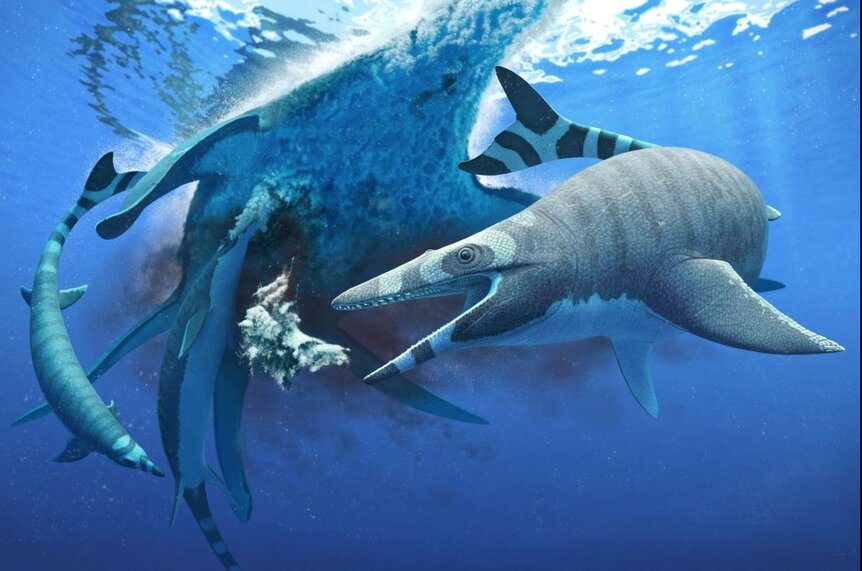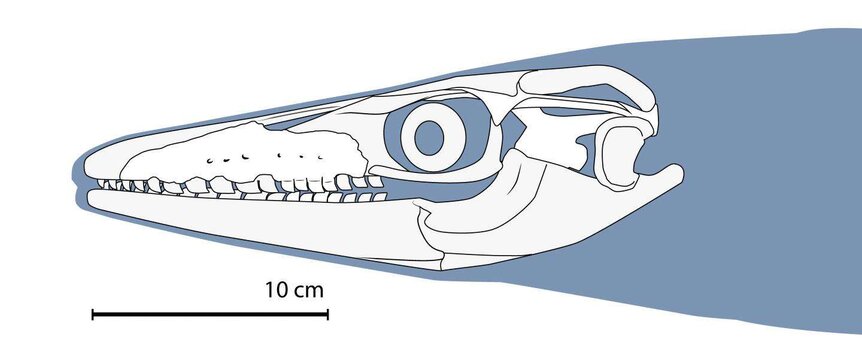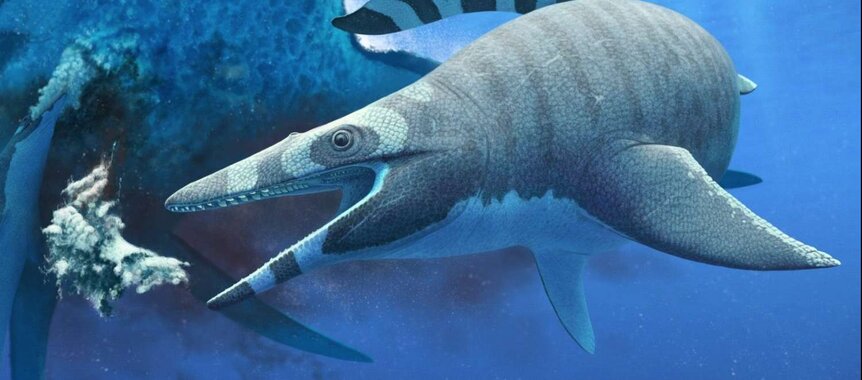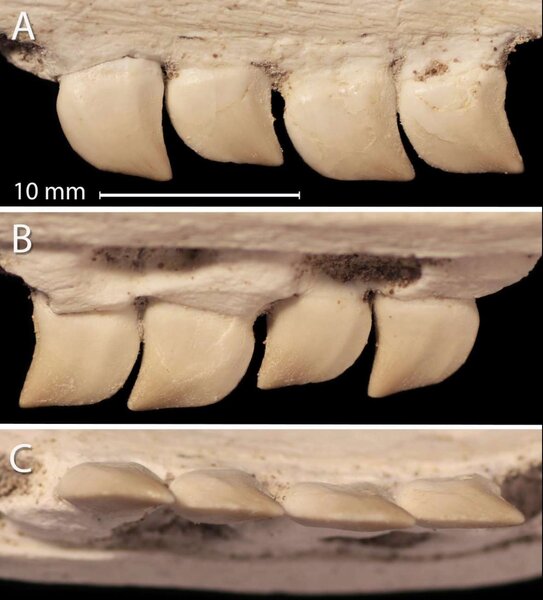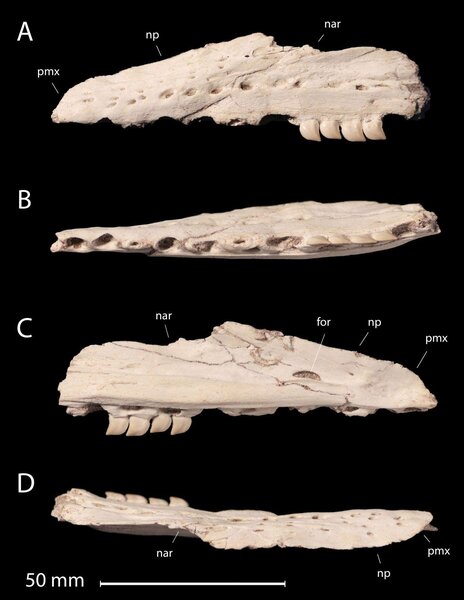Create a free profile to get unlimited access to exclusive videos, sweepstakes, and more!
Terrifying new species of Mosasaur sported a wicked set of razor-like teeth
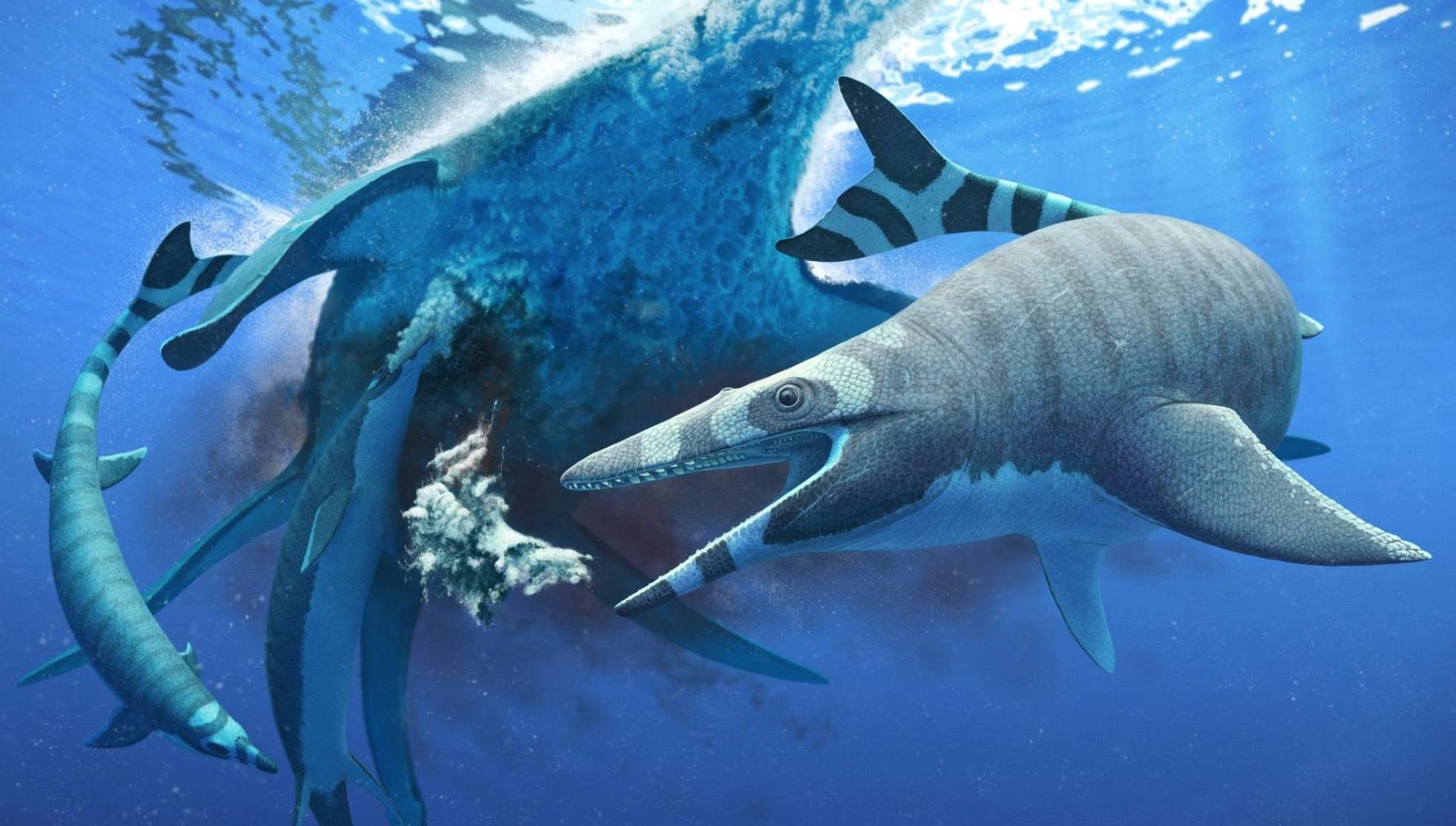
Prehistoric oceans churning with ravenous marine lizards like mosasaurs were not for the faint of heart, with a variety of swimming predators eager to satisfy their hunger by indulging in the floating banquet around them.
Mosasaurs prowled the ancient seas 82 to 66 million years ago during the Late Cretaceous period. With 40 different species belonging to the group, most had similar body styles, with thickly-muscled cylindrical bodies, wicked elongated jaws, and a long tail for swift propulsion. Their limbs evolved over the eons into powerful paddles employed for navigating around the violent seaways.
Now a new study led by Dr. Nick Longrich, the Senior Lecturer at the Milner Centre for Evolution at the University of Bath, has identified and catalogued an intimidating new species of mosasaur that sported shark-like serrated teeth perfect for chomping down on dinner. Details of their bizarre discovery were recently published in the online journal Cretaceous Research.
Xenodens calminechari was a dolphin-sized, sea-going marine lizard from the Cretaceous of Morocco that flashes a deadly grin comprised of sharp pearly whites packed edge-to-edge and similar to several species of killer sharks.
"Sixty-six million years ago, the coasts of Africa were the most dangerous seas in the world," Longrich explained. "Predator diversity there was unlike anything seen anywhere else on the planet. The new mosasaur adds to a rapidly growing list of marine reptiles known from the latest Cretaceous of Morocco, which at the time was submerged beneath a tropical sea.
"A huge diversity of mosasaurs lived here. Some were giant, deep-diving predators like modern sperm whales, others with huge teeth and growing up to ten meters long, were top predators like orcas, still others ate shellfish like modern sea otters - and then there was the strange little Xenodens. They coexisted with long-necked plesiosaurs, giant sea turtles, and saber-toothed fish. The new mosasaur adds another dangerous predator to the mix."
This ferocious find adds a new level of diversity in these elegant-but-deadly aquatic lizards of the Late Cretaceous, indicating that their proliferation hit its peak prior to the extinction level event 66 million years ago that eliminated all marine reptiles and dinosaurs. The conclusion is that Earth's ecosystem was not on a downslide before the fateful asteroid hit, but was instead branching out with newly evolved species expanding onto different evolutionary tracks.
Renowned paleoartist and biologist Andrey Atuchin provided the dramatic rendering of Xenondens using a scene chosen by Longrich and the study co-authors. Only the composition and reconstruction of the animals was his own.
"The phosphates show a lot of “bloat-and-float” - disarticulated skeletons, skulls without bodies, bodies without skulls. Isolated flippers of mosasaurs, plesiosaurs, turtles," Atuchin tells SYFY WIRE. "So the mosasaur and plesiosaur carcasses just rot and float, and are scavenged, and pieces fall off. So what the authors thought might be cool is a Zarafasaura or mosasaur carcass with the head hanging down, and this animal trying to bite off pieces. Zarafasaura looks more interesting as a corpse for me."
"I found the best and most dynamic poses to show this scene and the head of Xenodens in close-up so that its unusual shark teeth can be seen," he adds. "I studied many photos of whale carcasses and what decaying flesh looks like in the water. I also made 3D sculptures of the mosasaurs and Zarafasaura in order to most accurately draw them from the angle I needed."
Mosasaur fossils as a group have a long and abundant history of discovery. The very first specimen was unearthed during the 18th century with the fortuitous find of a massive skeleton in 1764 inside a limestone mine near Maastricht in the Netherlands on the Meuse River, a waterway that inspired its official name.
"We're still learning how diverse the mosasaurs were," noted Longrich. "And whenever we think we have them figured out, another one turns up.
"It reminded me of the teeth in the jaws of the sleeper sharks we'd sometimes catch while fishing halibut on my brother's boat. I remember seeing what those sharks could do — they'd carve huge bolts of flesh out of the halibut, almost cutting them in half. They're like the knives sold on those old late night TV commercial- they'll slice through anything,"
Longrich and his team believe that Xenodens' imposing jaws were similar to today's sleeper sharks and dogfish sharks, making the sea creature adept at slicing small fish in two, biting chunks from larger prey, and potentially feasting on the carcasses of even bigger marine reptiles.
"I'm blown away by the new discovery," added study co-author Anne Schulp, a researcher at Naturalis Biodiversity Center in Leiden and Professor of Palaeontology at Utrecht University.
"I've been working on closely related mosasaurs for a decade or two now, and Xenodens shows this group managed to exploit yet another food source. They clearly were even more successful than we thought."
